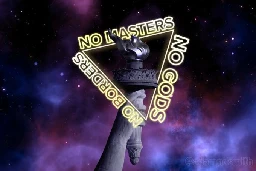
Earthling Liberation notes
- Revealed: The Climate Denial Network Behind ‘Classic Astroturf’ Farmers’ Campaignwww.desmog.com Revealed: The Climate Denial Network Behind ‘Classic Astroturf’ Farmers’ Campaign
A network of climate science deniers has been accused of “hijacking” rural concerns over a new social media campaign “to save the farming industry”. ‘No Farmers, No Food’ has gained over 50,000 followers on X in the fortnight since its launch, which was framed as a response to the widespread farmer...

- The Patriarchs: How Men Came to Rule

YouTube Video
Click to view this content.
This interview talks about pronatalism. If you're not ready to think politically about natalism without knee-jerking to a tweet-long critique, this is for you.
This discussion with science journalist Angela Saini does something that I really like: cut through centuries or thousands of years of bullshit diagonally to get to some key sets of connected truths. Her book is "The Patriarchs: How Men Came to Rule". I haven't read it yet, but it's going to the top of my list.
- Prisoners in the US are part of a hidden workforce linked to hundreds of popular food brandsapnews.com Prisoners in the US are part of a hidden workforce linked to hundreds of popular food brands
The Associated Press found goods linked to prisoners wind up in the supply chains of everything from Frosted Flakes to Coca-Cola.
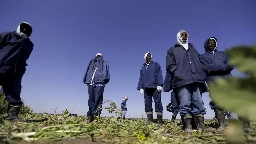
lots of animal products
- Climate populism will be the next great conspiracy complex | Aeon Essaysaeon.co Climate populism will be the next great conspiracy complex | Aeon Essays
The most ardent deniers of anthropogenic climate change today will become the climate conspiracy theorists of tomorrow

- "How Autism Connects Me With Animals", by Emily Moran Barwickbitesizevegan.org How Autism Connects Me With Animals
I believe my Autism deepens my empathy for and connection with animals. I know what it is like to never be truly understood.
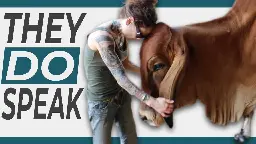
- 3 ways going vegan helped my anti-racism advocacy | Christopher Sebastian | TEDxTUWien
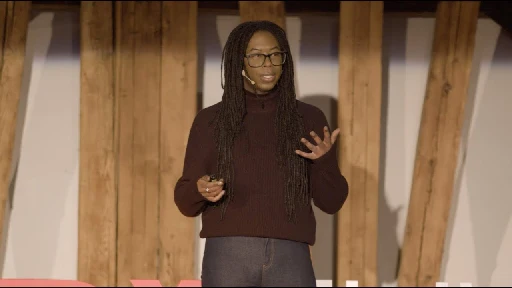
YouTube Video
Click to view this content.
- The Loveliness of Being Animal: Philosopher Melanie Challenger on her book ”How to be Animal” | In Tune to Nature Podcastcpfreeman.podbean.com The Loveliness of Being Animal: Philosopher Melanie Challenger on her book ”How to be Animal” | In Tune to Nature Podcast
Today it's one of my favorite topics -- the benefits of humans starting to embrace our animality and kinship with other animals, instead of falsely repressing our animality and continuing to think of ourselves as exceptional and above all animal life. We’ll talk about how we human animals can produc...
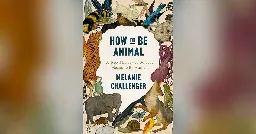
- Human evolution might not help us survive climate crisis, report findswww.euronews.com The way humans evolved may be stopping us from solving climate change
While studying human evolution to find solutions for the growing climate crisis, researchers found a mix of encouraging and depressing results.
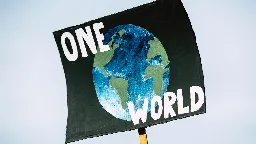
- People, not the climate, caused the decline of the giant mammalsnat.au.dk People, not the climate, caused the decline of the giant mammals
For years, scientists have debated whether humans or the climate have caused the population of large mammals to decline dramatically over the past several thousand years. A new study from Aarhus University confirms that climate cannot be the explanation.

This is related to the:
Overkill Hypothesis
And the article here is related to this paper: https://www.sciencedirect.com/science/article/pii/S221330542300036X
Highlights
- Modern humans (Homo sapiens) drive late-Quaternary megafauna extinctions, with no role for climate change.
- The strong body-size bias of the late-Quaternary extinctions is also linked to modern humans, not climatic change.
- The late-Quaternary extinctions represent the first planet-wide, human-driven transformation of the environment.
- Eating Meat Is Bad for Climate Change, and Here Are All the Studies That Prove Itsentientmedia.org Eating Meat Is Bad for Climate Change, and Here Are All the Studies That Prove It
As negotiations get underway at COP28, we compiled a list of the leading research documenting the connection between meat and greenhouse gas emissions.
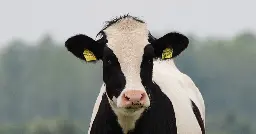
easy read
- Wolves return to Europe: what to do about them is a people problem – podcasttheconversation.com Wolves return to Europe: what to do about them is a people problem – podcast
More Europeans are having to learn how to live alongside predators again. Listen to The Conversation Weekly podcast.
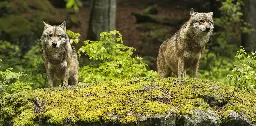
Podcast about wolves returning in Europe and the livestock industry (includes extensive pastoralism) getting anxious and feeding right-wing populist clownery.
Reminder to the clowns: there's no "livelihood" on a dead planet. Biodiversity, the health the biosphere, comes before business. Unfortunately, the podcast hosts don't understand that, so enjoy this dose of "conservation centrism".
- An evening with George Monbiot in Ghent discussing the future of food.

YouTube Video
Click to view this content.
The post-lecture discussion is more interesting.
- The Livestock Industry’s “Climate Neutral” Claims Are Too Good To Be Truewww.desmog.com The Livestock Industry’s “Climate Neutral” Claims Are Too Good To Be True
New research shows how a slew of recent climate pledges downplay the scope of methane pollution by the meat and dairy industries.
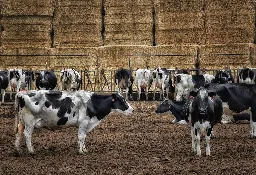
- The meat and dairy industry is not 'climate neutral', despite some eye-catching claimstheconversation.com The meat and dairy industry is not ‘climate neutral’, despite some eye-catching claims
Research focused on short-term cooling risks greenwashing the industry – new study.
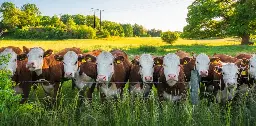
- The greenwashing of wool, explainedwww.vox.com The greenwashing of wool, explained
Big Wool wants you to believe it’s nice to animals and the environment. It’s not.
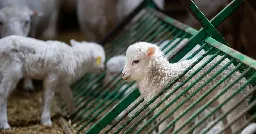
- Lobsters 🦞 Feel Pain When Boiled Alive, and Here’s How Science Knowssentientmedia.org Lobsters Feel Pain When Boiled Alive, and Here’s How Science Knows
The sentience of lobsters is being recognized by scientists – with ramifications for the culinary industry.
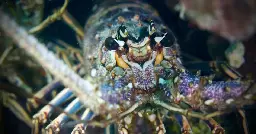
🦞
- Shrimp: The animals most commonly used and killed for food production — Rethink Prioritiesrethinkpriorities.org Shrimp: The animals most commonly used and killed for food production — Rethink Priorities
Decapod crustaceans or, for short, decapods (e.g., crabs, shrimp, or crayfish) represent a major food source for humans across the globe. If these animals are sentient, the growing decapod production industry likely poses serious welfare concerns for these animals.
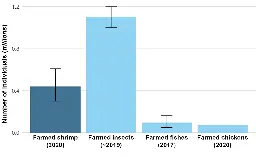
- "Big Meat’s Big Win in Europe" on the rising meat industry backed culture war in Europeveganism.social VeganPizza69 ⓋⒶ (@veganpizza69@veganism.social)
In case anyone is low on blood pressure and needs a boost, I recommend this podcast: "Big Meat’s Big Win in Europe" on the rising meat industry backed culture war in Europe https://euscream.com/big-meats-big-win-in-europe/ 1/9 <💬> In this episode: a deep dive into the activities and influenc...
thread
- The Comforting Lie of Climate-Friendly Meatnewrepublic.com The Comforting Lie of Climate-Friendly Meat
The industry insists that meat’s problems can be solved with technical fixes. We’ve seen this before.
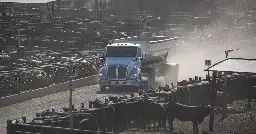
>This strategy seems to be working—at least when it comes to convincing policymakers and philanthropists. Technical solutions to livestock’s climate impact have emerged as the new orthodoxy in climate and agriculture circles, repeated by USDA Secretary Tom Vilsack, Biden’s climate envoy John Kerry, the government of Ireland, the new FAO report, and nine-figure philanthropic endeavors funded by groups like the Bezos Earth Fund. It doesn’t hurt that, as the British environmental journalist George Monbiot so aptly puts it, the “livestock industry’s political connections are umbilical.”
technofix
technohopium
greenwashing....
I would say astroturfing, but
astropasturing
sounds more fitting.
- Is ungulate migration culturally transmitted? Evidence of social learning from translocated animals - PubMedpubmed.ncbi.nlm.nih.gov Is ungulate migration culturally transmitted? Evidence of social learning from translocated animals - PubMed
Ungulate migrations are assumed to stem from learning and cultural transmission of information regarding seasonal distribution of forage, but this hypothesis has not been tested empirically. We compared the migratory propensities of bighorn sheep and moose translocated into novel habitats with those...

- Big meat and dairy lobbyists turn out in record numbers at Cop28www.theguardian.com Big meat and dairy lobbyists turn out in record numbers at Cop28
Food and agriculture firms have sent three times as many delegates to the climate summit as last year

- Can We Feed Ourselves without Devouring the Planet? | George Monbiot | TED

YouTube Video
Click to view this content.
- Is Inequality Inevitable?www.scientificamerican.com Is Inequality Inevitable?
Wealth naturally trickles up in free-market economies, model suggests
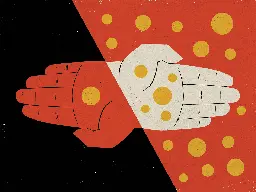
>Although the origins of inequality are hotly debated, an approach developed by physicists and mathematicians, including my group at Tufts University, suggests they have long been hiding in plain sight—in a well-known quirk of arithmetic. This method uses models of wealth distribution collectively known as agent-based, which begin with an individual transaction between two “agents” or actors, each trying to optimize his or her own financial outcome. In the modern world, nothing could seem more fair or natural than two people deciding to exchange goods, agreeing on a price and shaking hands. Indeed, the seeming stability of an economic system arising from this balance of supply and demand among individual actors is regarded as a pinnacle of Enlightenment thinking—to the extent that many people have come to conflate the free market with the notion of freedom itself. Our deceptively simple mathematical models, which are based on voluntary transactions, suggest, however, that it is time for a serious reexamination of this idea.
>In particular, the affine wealth model (called thus because of its mathematical properties) can describe wealth distribution among households in diverse developed countries with exquisite precision while revealing a subtle asymmetry that tends to concentrate wealth. We believe that this purely analytical approach, which resembles an x-ray in that it is used not so much to represent the messiness of the real world as to strip it away and reveal the underlying skeleton, provides deep insight into the forces acting to increase poverty and inequality today.
>Oligarchy
>In 1986 social scientist John Angle first described the movement and distribution of wealth as arising from pairwise transactions among a collection of “economic agents,” which could be individuals, households, companies, funds or other entities. By the turn of the century physicists Slava Ispolatov, Pavel L. Krapivsky and Sidney Redner, then all working together at Boston University, as well as Adrian Drăgulescu, now at Constellation Energy Group, and Victor Yakovenko of the University of Maryland, had demonstrated that these agent-based models could be analyzed with the tools of statistical physics, leading to rapid advances in our understanding of their behavior. As it turns out, many such models find wealth moving inexorably from one agent to another—even if they are based on fair exchanges between equal actors. In 2002 Anirban Chakraborti, then at the Saha Institute of Nuclear Physics in Kolkata, India, introduced what came to be known as the yard sale model, called thus because it has certain features of real one-on-one economic transactions. He also used numerical simulations to demonstrate that it inexorably concentrated wealth, resulting in oligarchy.
...
We find it noteworthy that the best-fitting model for empirical wealth distribution discovered so far is one that would be completely unstable without redistribution rather than one based on a supposed equilibrium of market forces. In fact, these mathematical models demonstrate that far from wealth trickling down to the poor, the natural inclination of wealth is to flow upward, so that the “natural” wealth distribution in a free-market economy is one of complete oligarchy. It is only redistribution that sets limits on inequality.
The mathematical models also call attention to the enormous extent to which wealth distribution is caused by symmetry breaking, chance and early advantage (from, for example, inheritance). And the presence of symmetry breaking puts paid to arguments for the justness of wealth inequality that appeal to “voluntariness”—the notion that individuals bear all responsibility for their economic outcomes simply because they enter into transactions voluntarily—or to the idea that wealth accumulation must be the result of cleverness and industriousness. It is true that an individual's location on the wealth spectrum correlates to some extent with such attributes, but the overall shape of that spectrum can be explained to better than 0.33 percent by a statistical model that completely ignores them. Luck plays a much more important role than it is usually accorded, so that the virtue commonly attributed to wealth in modern society—and, likewise, the stigma attributed to poverty—is completely unjustified.
Moreover, only a carefully designed mechanism for redistribution can compensate for the natural tendency of wealth to flow from the poor to the rich in a market economy. Redistribution is often confused with taxes, but the two concepts ought to be kept quite separate. Taxes flow from people to their governments to finance those governments' activities. Redistribution, in contrast, may be implemented by governments, but it is best thought of as a flow of wealth from people to people to compensate for the unfairness inherent in market economics. In a flat redistribution scheme, all those possessing wealth below the mean would receive net funds, whereas those above the mean would pay. And precisely because current levels of inequality are so extreme, far more people would receive than would pay.
- Sam Harris & Peter Singer discuss veganism 🤡💬🗨️🤡

YouTube Video
Click to view this content.
- Can other animals understand death? - Barbara J. King
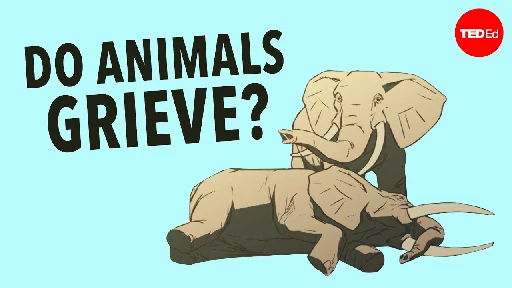
YouTube Video
Click to view this content.
- Meat Lobby at COP28

cross-posted from: https://lemmy.world/post/8973846
> Caption > > (Meme type image) > > >Upper image: Penny the Clown, standing or walking forward, in daylight, but in the shadow of a building behind some grass. Text: "The meat lobby - on its way to" > > >Lower image: picture of large real clown gathering event, a group photo of about 150 clowns. Text: "Conference Of Parties 2023" > >
- WHY ANIMAL AGRICULTURE IS GARBAGE! (For Humans & The Planet)
YouTube Video
Click to view this content.
- How colonial rule radically shifts historical responsibility for climate change - Carbon Briefwww.carbonbrief.org Revealed: How colonial rule radically shifts historical responsibility for climate change - Carbon Brief
Historical responsibility for climate change is radically shifted when colonial rule is taken into account, Carbon Brief analysis reveals.
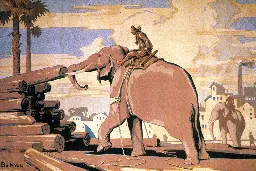
- Consumption of ultra-processed foods and risk of multimorbidity of cancer and cardiometabolic diseases: associations were most notable for animal-based products (HR: 1.09, 95% CI: 1.05, 1.12), and art
> After a median of 11.2 years of follow-up, 4461 participants (39% women) developed multimorbidity of cancer and cardiometabolic diseases. Higher UPF consumption (per 1 standard deviation increment, ∼260 g/day without alcoholic drinks) was associated with an increased risk of multimorbidity of cancer and cardiometabolic diseases (HR: 1.09, 95% CI: 1.05, 1.12). Among UPF subgroups, associations were most notable for animal-based products (HR: 1.09, 95% CI: 1.05, 1.12), and artificially and sugar-sweetened beverages (HR: 1.09, 95% CI: 1.06, 1.12). Other subgroups such as ultra-processed breads and cereals (HR: 0.97, 95% CI: 0.94, 1.00) or plant-based alternatives (HR: 0.97, 95% CI: 0.91, 1.02) were not associated with risk.
The irony is in the details. Even with ultra-processed foods (UPF), animal parts are still winning at being terrible for health, worse than sugary-sweetened drinks.
- Earthling Ed, Joey Carbstrong And Others ROASTING MEAT(EATERS)
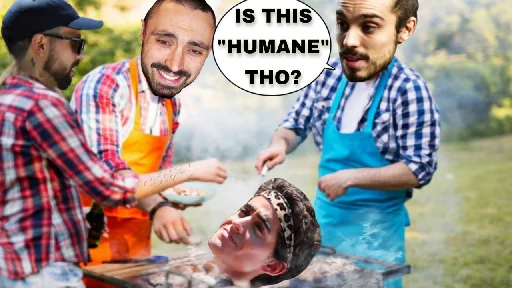
YouTube Video
Click to view this content.
- No sustained increase in zooarchaeological evidence for carnivory after the appearance of Homo erectus
>The appearance of Homo erectus shortly after 2.0 Ma is widely considered a turning point in human dietary evolution, with increased consumption of animal tissues driving the evolution of larger brain and body size and a reorganization of the gut. An increase in the size and number of zooarchaeological assemblages after the appearance of H. erectus is often offered as a central piece of archaeological evidence for increased carnivory in this species, but this characterization has yet to be subject to detailed scrutiny. Any widespread dietary shift leading to the acquisition of key traits in H. erectus should be persistent in the zooarchaeological record through time and can only be convincingly demonstrated by a broad-scale analysis that transcends individual sites or localities. Here, we present a quantitative synthesis of the zooarchaeological record of eastern Africa from 2.6 to 1.2 Ma. We show that several proxies for the prevalence of hominin carnivory are all strongly related to how well the fossil record has been sampled, which constrains the zooarchaeological visibility of hominin carnivory. When correcting for sampling effort, there is no sustained increase in the amount of evidence for hominin carnivory between 2.6 and 1.2 Ma. Our observations undercut evolutionary narratives linking anatomical and behavioral traits to increased meat consumption in H. erectus, suggesting that other factors are likely responsible for the appearance of its human-like traits.
- Does Humanity Have to Eat Meat? (No)www.scientificamerican.com Does Humanity Have to Eat Meat?
Meat eating may not have made us human after all, say paleoanthropologists
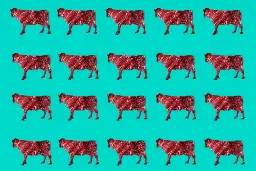
No, but read the article at least.
- Italy bans lab-grown meat and ‘tofu steak’ in a bid to protect prosciutto and the people who make itwww.inkl.com Italy bans lab-grown meat and ‘tofu steak’ in a bid to protect prosciutto and the people who make it
Factories found to be producing fake meat face fines exceeding $160,000.
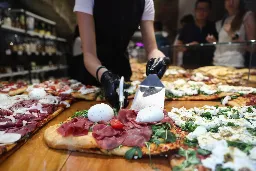
"Cultural carnism", promoted, of course, by fascist types.
- Recovering From Religion – E200: Trauma and Your Brain w/ Dr. Darrel Ray – 1:39:24radiopublic.com Recovering From Religion – E200: Trauma and Your Brain w/ Dr. Darrel Ray – 1:39:24
Religion impacts our brains and nervous systems. The evidence is easy to see and is experienced by many people. Dr. Ray will show how emotions like fear and disgust are used by religion. He will also demonstrate how religion interferes with our normal attachment systems and how religion distorts nor...

- What Fish Farming Really Means for the Environment, Animals and Peoplesentientmedia.org What Fish Farming Really Means for the Environment, Animals and People
Despite the seafood industry’s claims, eating fish may not be as healthy or sustainable as consumers have been led to believe.
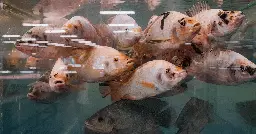
- The roots of organic farming lie in fascismtheconversation.com The roots of organic farming lie in fascism
Organic farming has roots in 20th century fascism, challenging the assumption that environmentalism and progressive politics are symbiotic.


